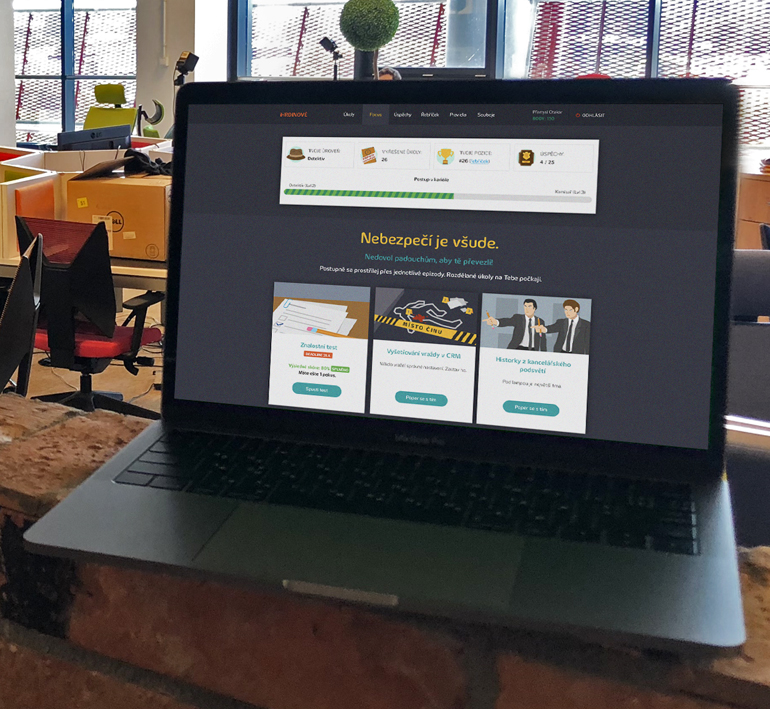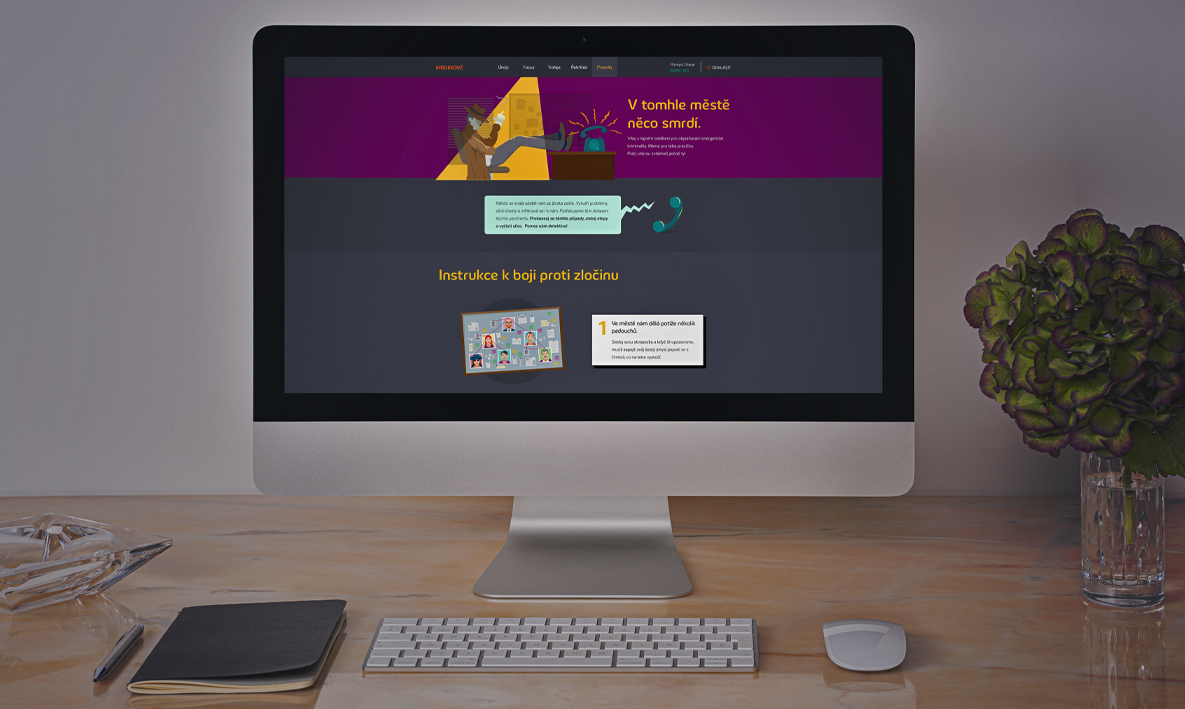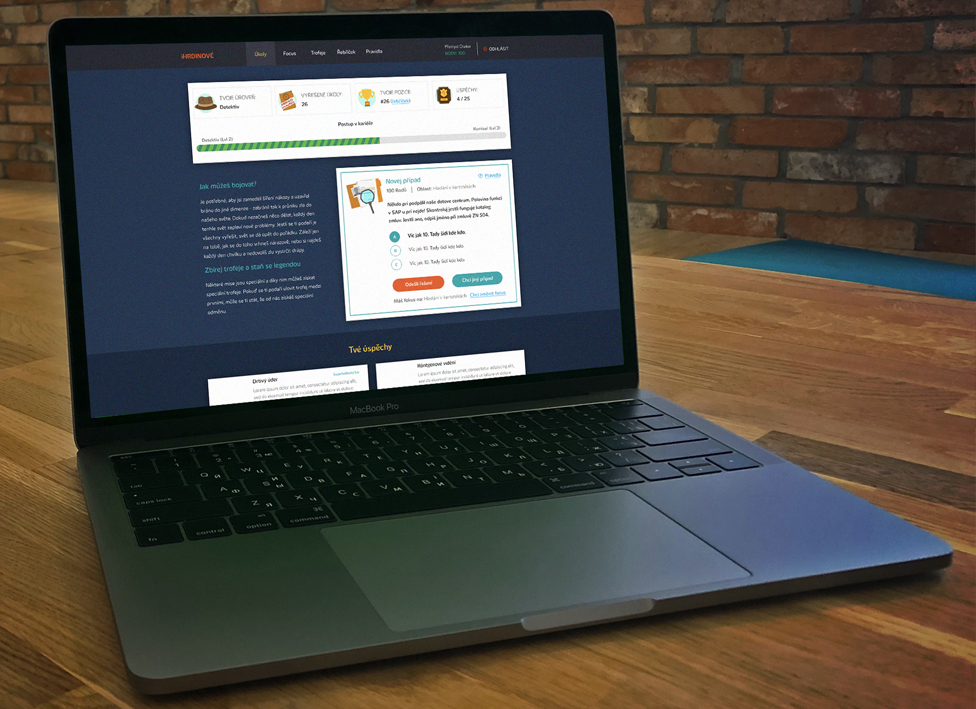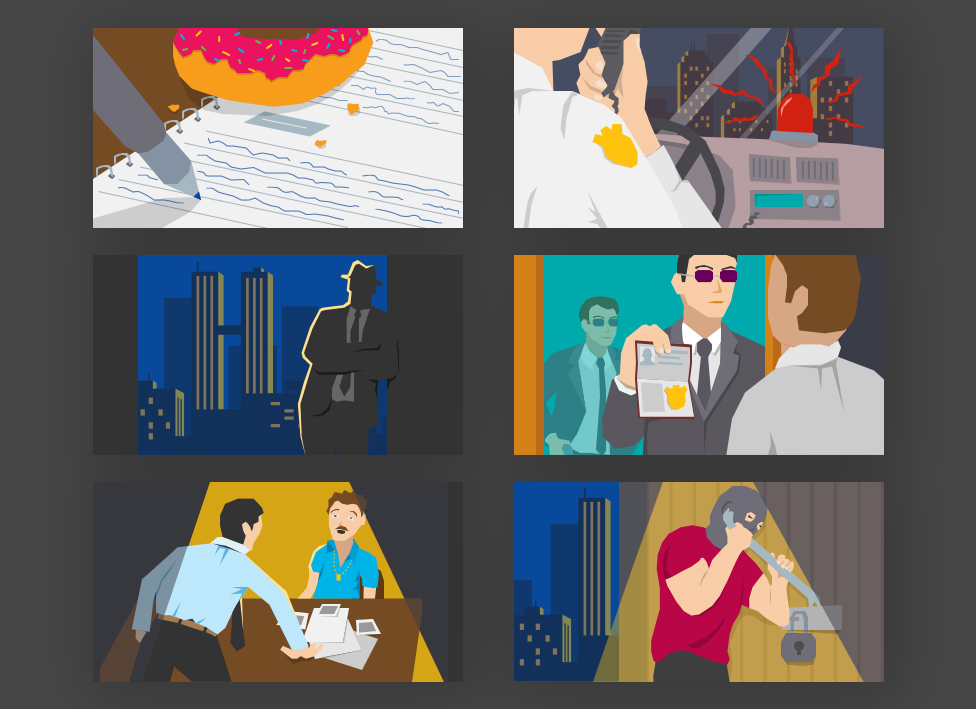How to onboard call center and front desk workers and get them to continually broaden their knowledge, while keeping up with the KPIs? Our client has a large call centre and a chain of front-desk branch offices across the country. As the employees are the ones with the direct customer contact, they have to provide up-to-date information, have a clear overview of company products and create a positive customer experience.
For that, they have to refresh their knowledge on a regular basis. But how do you achieve that, when you are busy with meeting your daily KPIs?
It turns out, offering classic e-learning or PDFs in a central learning database is not effective.
Put simply, there is no time for that. And so we were asked to help.
 Client
Client
innogy — #1 gas supplier in the Czech republic, is a modern energy company with 1.7 mil. customers and 4.200 workforce.
 Starting point
Starting point
To understand the challenge, we had to conduct a series of interviews and workshops with the customer support employees, which helped us to get a clear picture about their work routine, habits, values and challenges.
What we found out is that they are great at managing their time. However, between calls and customers, they only have a little time to work on their knowledge. Moreover, when comparing highly efficient teams with the average teams, we found out that the main difference was the amount of feedback. Not quantitatively (the teams have lots of it), but qualitatively. Those were the crucial inputs to work with.
 Gamified solution
Gamified solution
We understood that our solution had to be quick, easy to access, and had to provide not only information about the latest products, but meaningful feedback that supports their internal values and motivation as well.
So, we decided to come up with a detective-themed trivia game, which was accessible via desktop notification (or directly through a web browser). Players received daily desktop notifications that reminded them, that if they have spare minute, there is a detective case that needs their expertise to be closed. This trivia game was part of a larger meta-game, in which they had to find and arrest the “biggest criminal brains in the gas / energy industry”. The more cases the players solved, the higher were the chances to lock some gangsters up.

Daily dose of fun and learning made easy
Thanks to easy access, players did not have to spend time by searching the intranet or scrolling through a PDF with actual product information. They just played the game for 2-3 minutes per day and were updated on a daily basis.
The game rewarded players with an acknowledgment of their expertise and linked their success to their other qualities such as critical thinking or their pro-client approach.
We gave our players freedom of how many cases they wished to solve and when they wished to deal with them. Therefore, they were able manage their time efficiently and still be up-to-date on required knowledge.
One of the cornerstones of our solution was fun. The detective cases were often written in a light-hearted, sometimes absurd tone. For players it meant that they were able to enjoy some silly humour while improving their knowledge base. For some, the prospect of laughter was enough reason to click on the notification and start playing.
 Main tools we used
Main tools we used
-
Narrative and storytelling
By using the investigation theme, we are breaking the day-to-day routine and allowing players to immerse themselves in a new attractive role. The story serves here as an bridge that connects a player’s motivation with the real purpose of the gamified solution (become the great detective who catches and locks up all the bandits, which represent the most common mistakes in customer service).
-
Instant feedback
We wanted to create a feedback loop that would instantly tell the players how they were doing, how they were improving in their qualities and give them constant recognition and reinforcement of their effort.
-
Collecting and sense of progression
As the work routine of our players might often seem mundane and repetitive, we have to make sure that they can feel their progress within the game. Therefore, we have introduced collectable badges that represent particular player success. One quick look on the dashboard shows quick recognition of their improvement and can easily communicate next steps and goals.
 Results
Results
-
More than 60% of the workforce became active players.
-
In a post-launch survey, the majority of users stated that they feel that this method helps them perform better at their job.
-
Since its very first version in 2016, gamified on the job training continues to be in use, with additional theme models, added mechanics and a growing user base.






